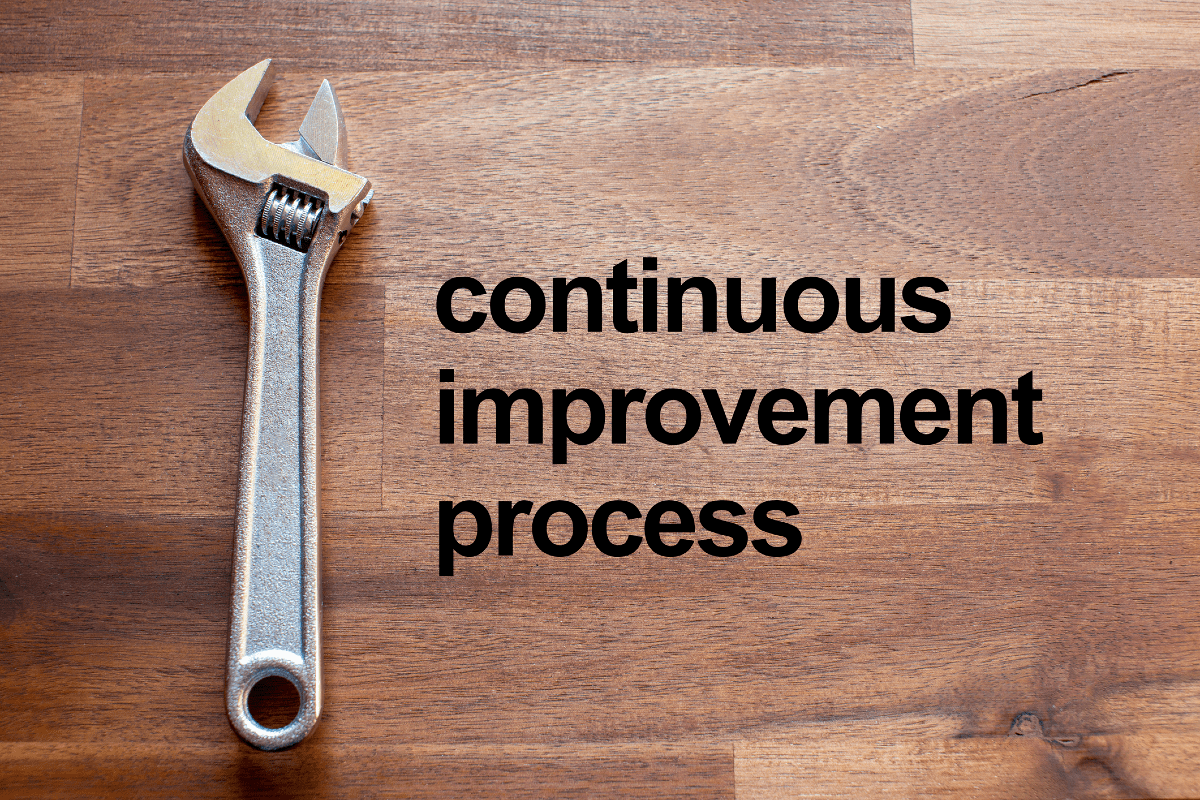Improvement Tool 1 - Retrospectives with Your Team
Improvement Tool 2 - Applying Metrics to All Project Areas Critical for Success
Thank you for reaching out to Sigma Software!
Please fill the form below. Our team will contact you shortly.
Sigma Software has offices in multiple locations in Europe, Northern America, Asia, and Latin America.

USA

Sweden

Germany

Canada

Israel

Singapore

UAE

Australia

Austria

Ukraine

Poland

Argentina

Brazil

Bulgaria

Colombia

Czech Republic

Hungary

Mexico

Portugal

Romania

Uzbekistan
Before answering the question “Where do I get ideas to improve the project processes,” let’s figure out if any improvements are necessary at all. Maybe things work properly already and there is no room for improvement?
Improvement Tool 1 - Retrospectives with Your Team
Improvement Tool 2 - Applying Metrics to All Project Areas Critical for Success
If the customer does not complain to management about the project team daily; if your team is able to deliver within the specified timeframe; if the team members do not leave the project – should we assume that the project is all good and we don’t have to take any steps to improve it for all the members of the entire process?
Actually, we can’t be sure here. Even if customers don’t complain to you today, this does not mean that tomorrow they will not find another provider who delivers the same value as you do, but at a much cheaper rate. If the product is delivered on schedule but with lower quality – this is not a success, but a failure. Also, we can’t say that we have a dream-team when team members are permanently engaged in conflicts with each other instead of doing their jobs. Without proper monitoring and looking for solutions, these issues may lead to significant difficulties in the future.

So it is simple for me: when you have a project – you have space for improvements. It’s almost impossible to have things working properly for a long period of time in a constantly changing world. For example, in the case of legislation changes, you need to reorganize your process fast in order to comply with them. Do you remember how it was with GDPR? In addition to product revisions, companies had to rebuild their internal processes to store and process users’ data in a proper and more secure way.
We have a similar situation when any changes happen to a team including planned growth. The team rolls back from the Performing stage to the Forming one, so the Project Manager has to choose another workflow to collaborate with the team members, help them to re-establish their relations, and assist newcomers with integration. The need for reorganization also arises when changes occur on the customer’s side, such as migration of infrastructure to the cloud, purchasing new analytical services, or just introducing a new requirement for reporting. It is critical to adapt to these changing circumstances fast if you want your project to end successfully.
However, even when no significant changes take place, the Project Manager should keep looking for ways to apply their skills for optimization and innovation instead of becoming complacent. One of the main goals for the Project Manager is to set up a continuous improvement framework for the project.
So, how do we know which areas need improvements? At Sigma Software, we encourage our Project Managers to look for ideas and get inspiration from using the following approaches and tools:
“It’s uncomfortable”
“Why are we doing this?”
“It gets on my nerve when…”
All of these are hints at opportunities to improve project processes.
Conducting retrospectives regularly is very important since they give the team members a chance to express their concerns.
Here are some real-life examples of how team members’ remarks can initiate considerable improvements in the processes used on your project:
Besides basic metrics that the Project Manager usually applies when choosing a certain methodology for the project (e.g.cycle time/lead time, work in progress, cumulative flow diagram for Kanban), it is worth finding out what’s actually important for the customer and to help them measure these KPIs.
Let’s imagine that we are hired to automate a process. It is logical to assume that the customer would like to know how long it will take them to get a return on their investment and how much better their employees will be able to work using the tool we developed in comparison with manual processes. Measure the parameters in the current process and compare them with the new ones after your solution is implemented. Make a calculation, visualize the result, and let your customer be prepared for the conversation with investors or stakeholders who make the final decision about financing for your further collaboration.
When it comes to standard metrics, we at Sigma Software collect the Defects Root Cause statistics for all projects. When you determine the key factors causing defects, you will be able to eliminate them.
Below are example root causes for defects in software development and suggestions on how you can remove them.
It is important to collect Defects Root Cause statistics rather than just relying on personal opinion to get a clear picture. Based on my experience, when developers name the most common causes of defects on a project, they may miss some important items. When we collect statistics, we sometimes encounter quite unexpected root causes that no one paid much attention to. Of course, some defects are possible in the development process, but an experienced Project Manager can introduce improvements to the process in order to reduce the number of defects and shorten the time needed for their removal.
One more example of a quite versatile metric is a focus factor. This is a ratio between the time spent on feature implementation against the total time. The focus factor is used to see how much a team is focused on delivering value and not resolving obstacles.
It is expected that as the team dives deeper into the project and the domain and their teamwork level grows, the focus factor increases until it reaches ~0.8. If we observe other dynamics over time, the Project Manager should find issues that distract the team from completing the release goals and remove them.
Another tool that we at Sigma Software suggest our Project Managers use for finding areas to improve projects, is a Maturity Checklist. It includes industry best practices and company rules established by our experts over the years. When Project Managers conduct self-assessments according to a checklist, they can find imperfections in their current processes and locate areas of improvement.
Below are some examples from this checklist and consequences of not meeting these rules.
There are about 100 items in our Maturity checklist and this is just the management-related part. It also covers the engineering, software testing, and configuration management areas. So, after each self-assessment or assessment by internal company auditors, a project team gets a list of to-dos that must be completed for the project to be successful.
I always get ideas from my colleagues who share their know-how and lessons learned at our annual PM Gathering conference and regular meetings of the Sigma Software PM Club. Such meetings are always an opportunity to adopt colleagues’ experience and get inspired by their successes to improve the processes in my projects.
“My dear, here we must run as fast as we can, just to stay in place. And if you wish to go anywhere you must run twice as fast as that.” ― Lewis Carroll, Alice in Wonderland.
Circumstances and both external and internal environments are subject to constant changes. This means that you can implement improvements on a project endlessly. We at Sigma Software do not stop for a minute in this process and continue to surprise our customers with innovative ideas, approaches, and quick response to changes.

Liza is a Project Manager with more than 10-years’ experience in IT. She has a proven knowledge and skills in various areas of IT management, including project initiation, planning, executing, controlling and closing; scope, schedule and quality management; project resources planning and people management, risk management and many more. Liza shares her knowledges as a Sigma Software University trainer, manages and coaches collocated, distributed and remote teams. As a PMO member, Liza is actively involved into company’s process improvements and internal audits.
Improvement Tool 1 - Retrospectives with Your Team
Improvement Tool 2 - Applying Metrics to All Project Areas Critical for Success


A Software Bill of Materials (SBOM) is becoming one of the most important documents in modern software development. Still, many organizations struggle to create...

As cloud sovereignty becomes a strategic priority across the EU, Sigma Software applies its deep expertise and extensive experience to contribute to the develop...

Data is everywhere, yet its payoff isn't always there. Many IT leaders struggle with scattered analytics, rising storage costs, and unclear returns.We face...
Would you like to view the site in German?
Switch to German